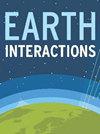坦桑尼亚辛吉达市罗非鱼及其花岗岩环境中226Ra、228Ra和40K同位素放射性风险评价
IF 1.1
4区 地球科学
Q3 GEOSCIENCES, MULTIDISCIPLINARY
引用次数: 1
摘要
食用含有高水平放射性核素的鱼类会对消费者的健康造成不良影响。辛吉达市的人们从花岗岩岩石的湖泊和池塘中捕捞鱼类,这些岩石与危险的放射性同位素有关,这些放射性同位素可能被他们食用的鱼类生物浓缩。目前,还没有研究确定这些环境中鱼类体内的放射性同位素水平。开展这项研究是为了分析226Ra、228Ra和40K同位素的放射性水平,以评估与Singida市罗非鱼消费及其环境有关的辐射风险。随机抽取51份样品,包括水体(20份)、沉积物(20份)、尼罗罗非鱼(8份)和曼雅拉罗非鱼(3份);然后,在2022年5月至6月期间,使用高纯度锗(HPGe)探测器对它们进行分析。结果表明:(1)228Ra在鱼类和水样中的活度低于检测限,而沉积物中228Ra的综合活度在国际可接受水平内;(ii)所有其他样本的226Ra和40K的平均活度浓度均在建议水平内;(三)所分析样本的放射性核素活性在沉积物中较高,其次是鱼类,最后是水中;(iv)生物积累结果表明,只有40K是生物积累的(尼罗罗非鱼为1.26),其他放射性核素(226Ra、228Ra)没有生物积累;(vi)从水到鱼的放射性核素转移量高于从沉积物到鱼的放射性核素转移量;(七)因食用尼罗罗非鱼和曼雅拉罗非鱼造成的人体有效剂量分别为0.00973和0.005毫西弗/年,低于1毫西弗/年的国际限值。因此,这些研究结果表明,研究区域内鱼类目前的放射性水平不会对鱼类消费者构成重大的辐射风险。然而,建议对其他类型的鱼进行更多的研究。本文章由计算机程序翻译,如有差异,请以英文原文为准。
A Radiological Risk Assessment of 226Ra, 228Ra and 40K Isotopes in Tilapia Fish and its Granitic Environment in Singida Municipality, Tanzania
Consumption of fish containing elevated levels of radionuclides can lead to undesirable health effects for consumers. People in the Singida Municipality harvest fish from lakes and ponds of granite rocks which are linked with hazardous radioisotopes that may be bio-concentrated by fishes they consume. Currently, no study has ascertained the levels of radioisotopes in fish from these environments. This study was carried out to analyse the radioactivity levels of 226Ra, 228Ra and 40K isotopes in order to assess the radiological risk associated with Tilapia fish consumption and its environment in Singida Municipality. Some 51 samples, which included water (20), sediment (20), Nile tilapia (8) and Manyara tilapia (3), were randomly sampled and composited; then, they were analysed using a high-purity germanium (HPGe) detector, between May and June 2022. The results revealed that (i) the activity levels of 228Ra were below the detection limit for fish and water samples, while in sediment, the combined activity of 228Ra was within the acceptable international levels; (ii) the mean activity concentrations of 226Ra and 40K in all other samples were within the recommended levels; (iii) the activities of radionuclides in the samples analysed were high in sediments, followed by fish, and lastly water; (iv) the bioaccumulation results show that only 40K was bio-accumulated (with 1.26 in Nile tilapia), while other radionuclides (226Ra, 228Ra) were not bio-accumulated; (vi) the radionuclide transfer from water to fish was higher compared to the radionuclide transfer from sediment to fish; (vii) the human effective doses due to consumption of Nile tilapia and Manyara tilapia were 0.00973 and 0.005 mSv/y, respectively, which is below the 1 mSv/y international limit. These findings therefore show that the current levels of radioactivity in fish in the study area do not pose a significant radiological risk to fish consumers. However, more studies on other types of fish are recommended.
求助全文
通过发布文献求助,成功后即可免费获取论文全文。
去求助
来源期刊

Earth Interactions
地学-地球科学综合
CiteScore
2.70
自引率
5.00%
发文量
16
审稿时长
>12 weeks
期刊介绍:
Publishes research on the interactions among the atmosphere, hydrosphere, biosphere, cryosphere, and lithosphere, including, but not limited to, research on human impacts, such as land cover change, irrigation, dams/reservoirs, urbanization, pollution, and landslides. Earth Interactions is a joint publication of the American Meteorological Society, American Geophysical Union, and American Association of Geographers.
 求助内容:
求助内容: 应助结果提醒方式:
应助结果提醒方式:


